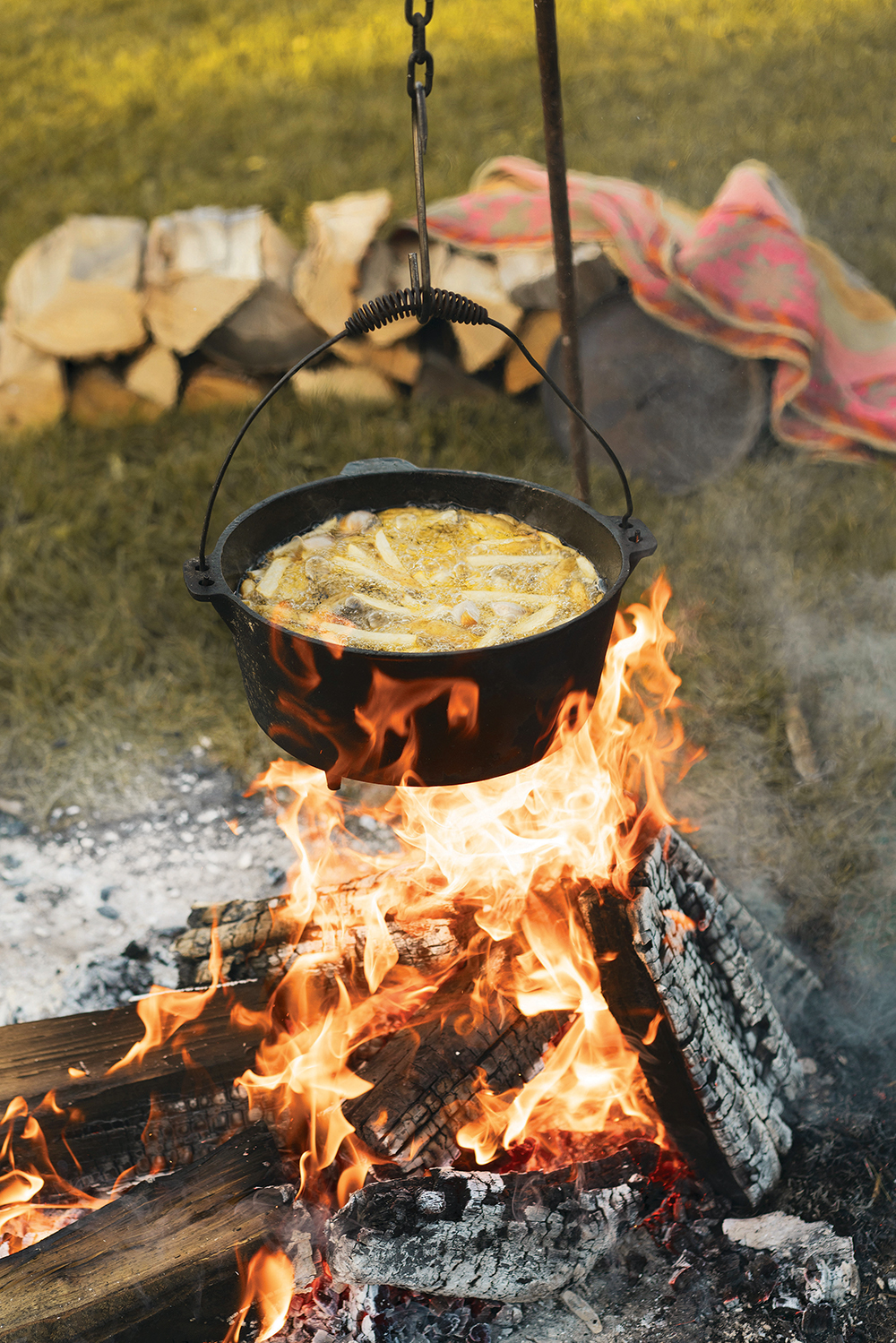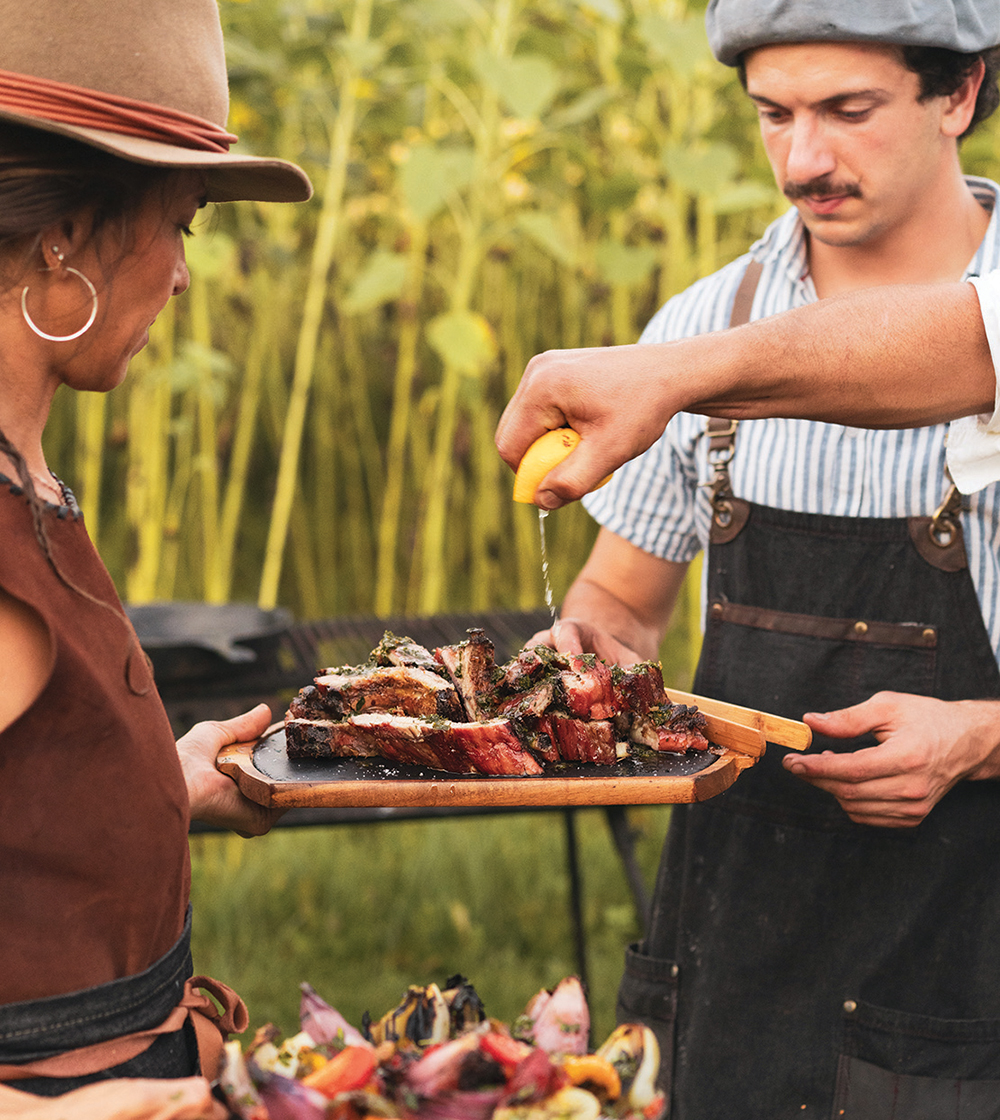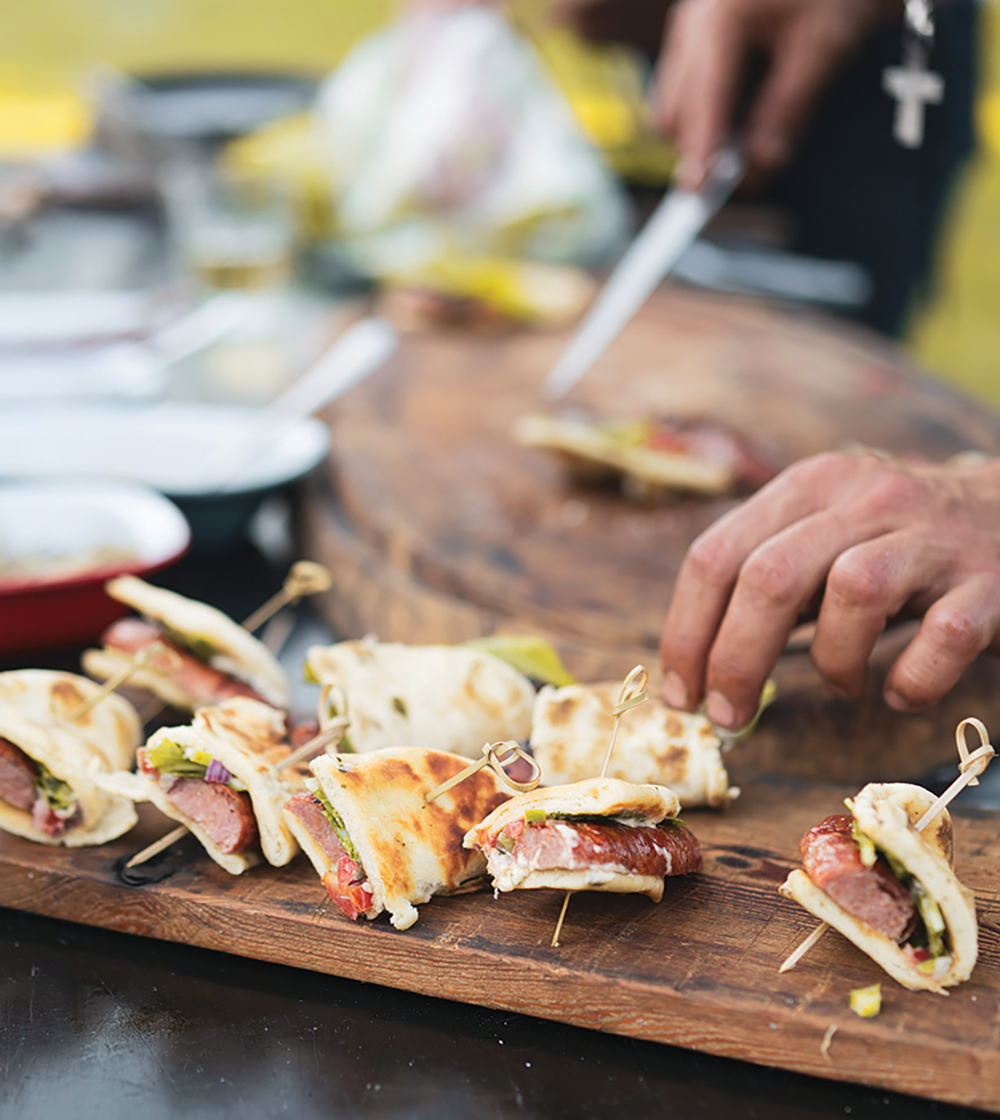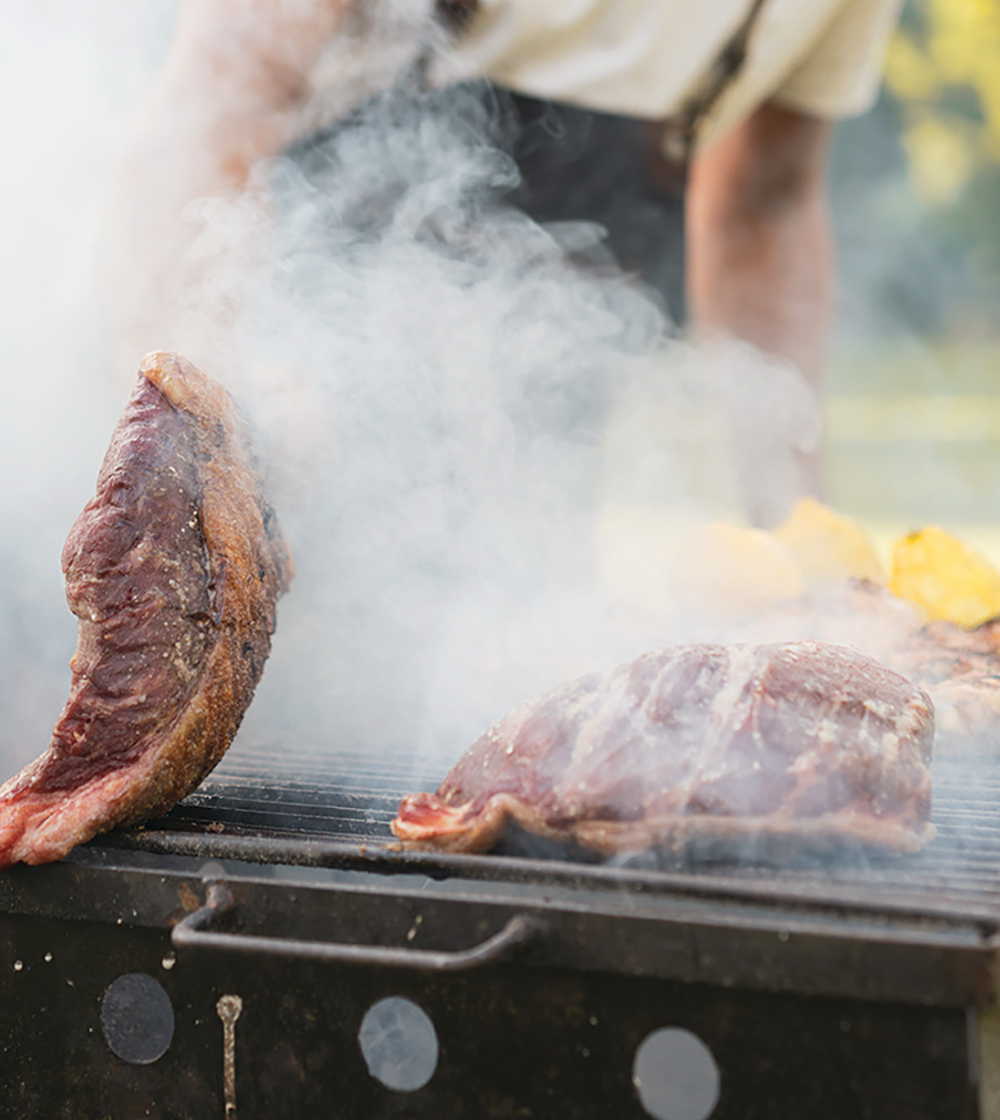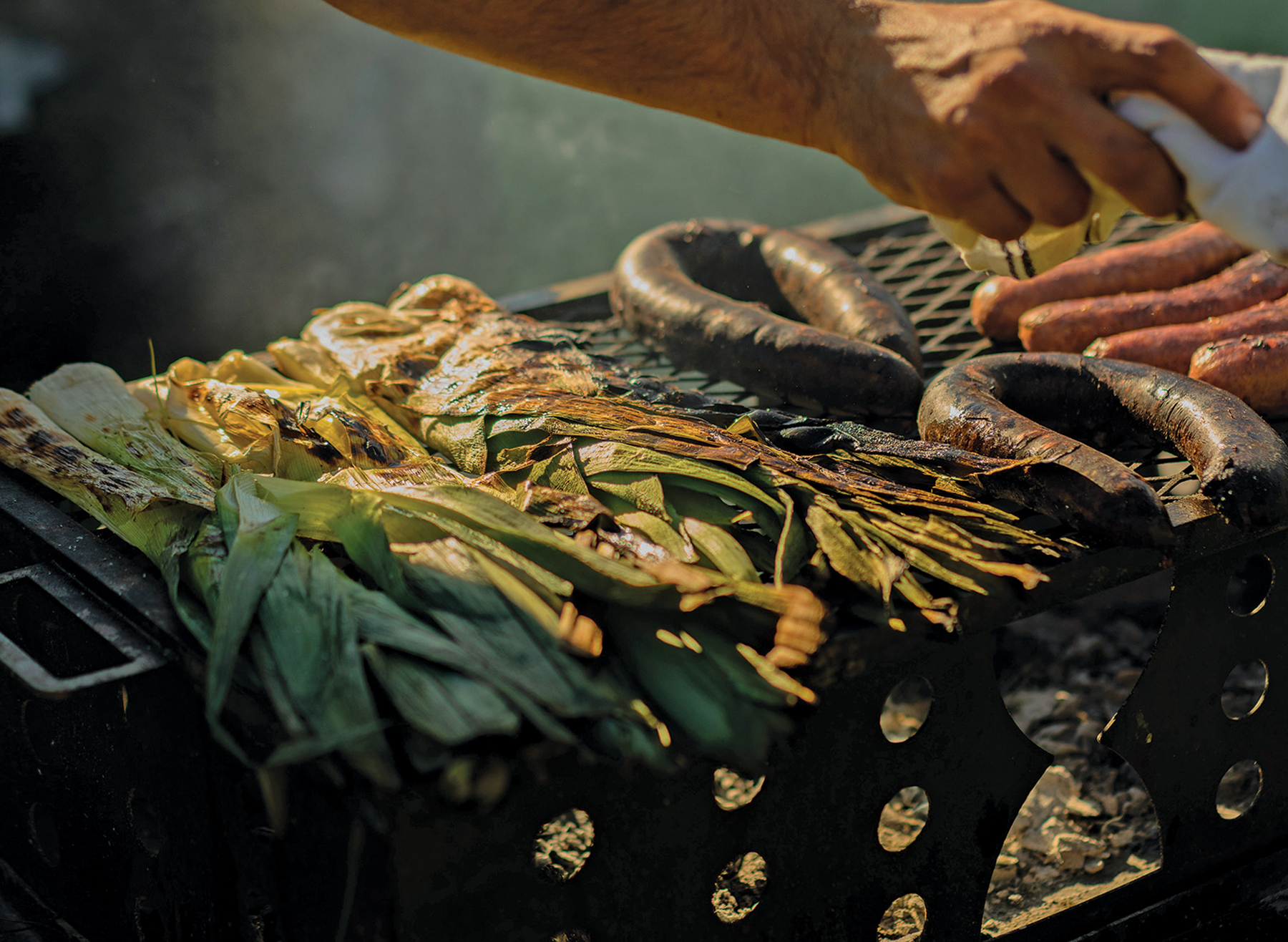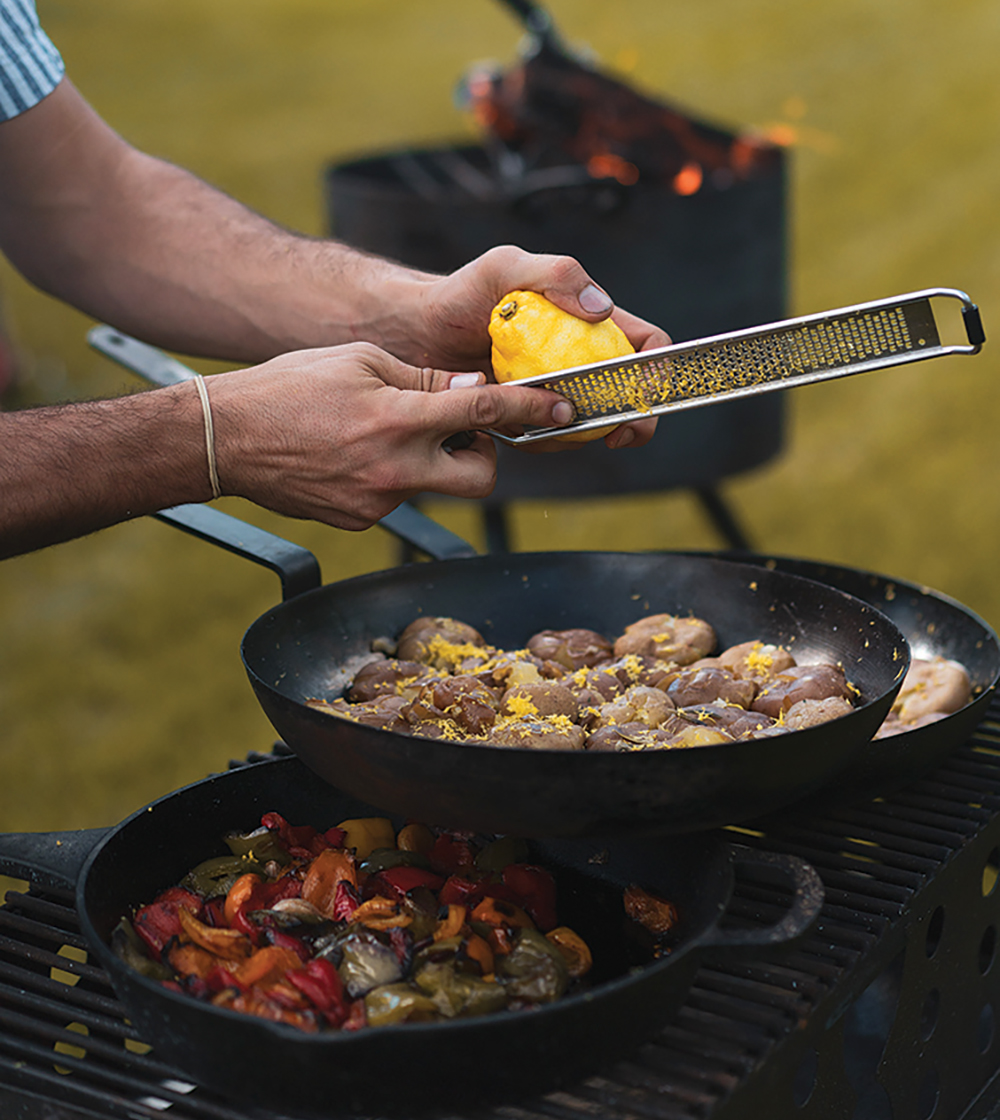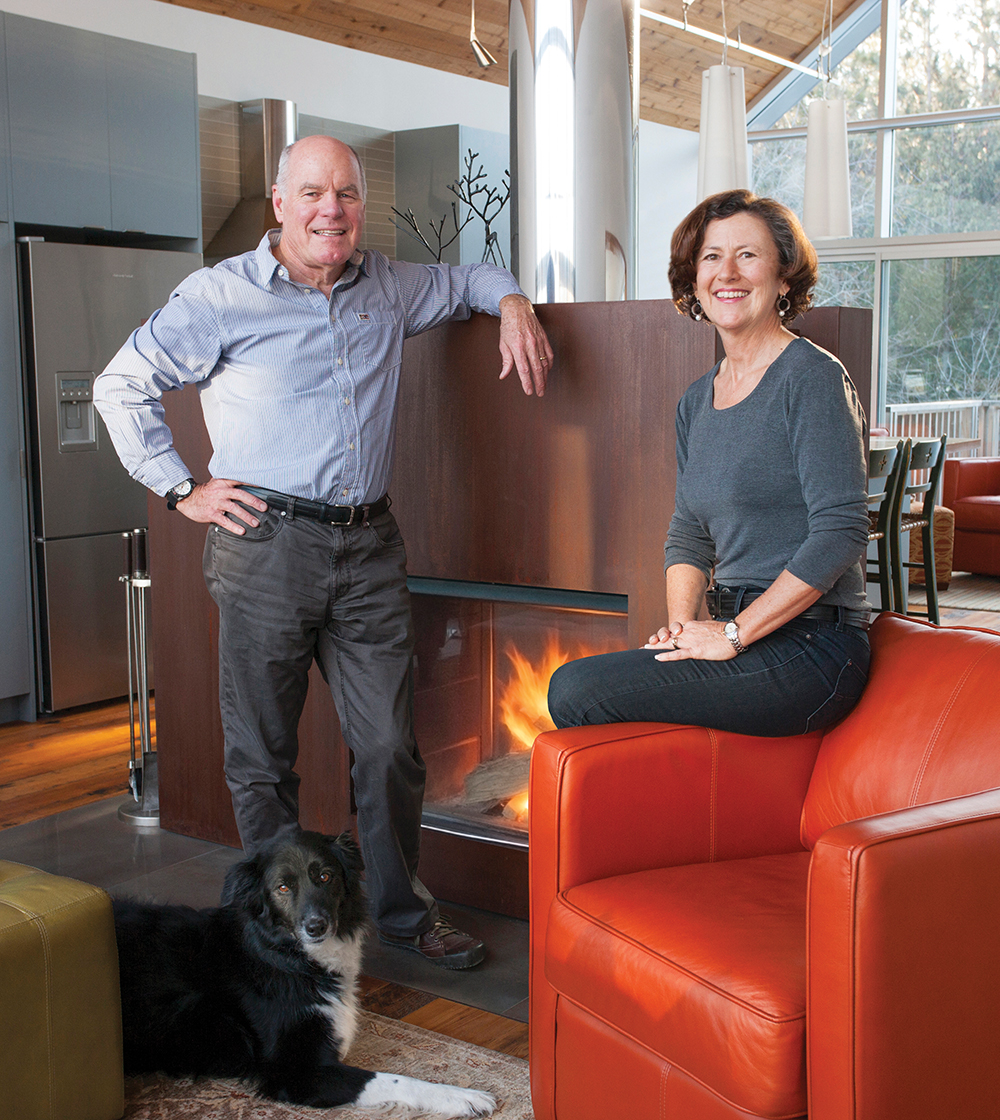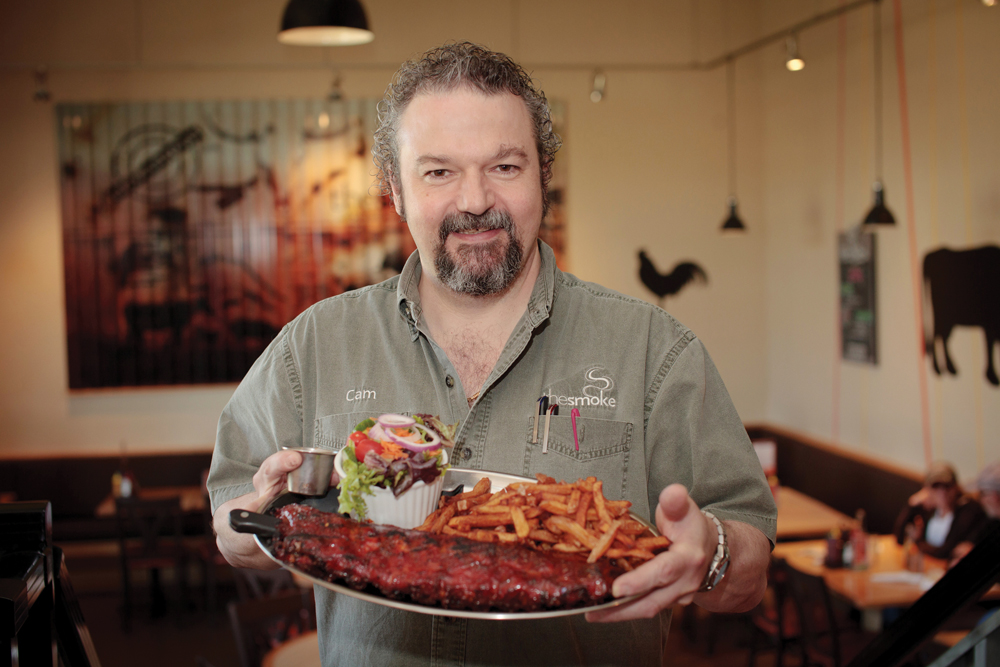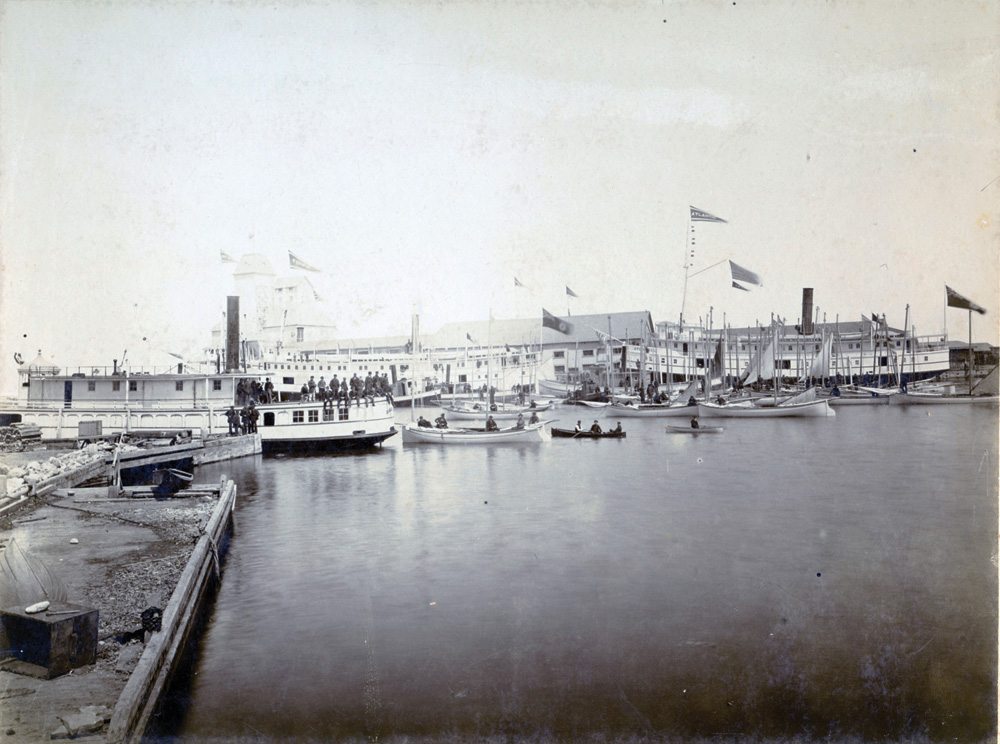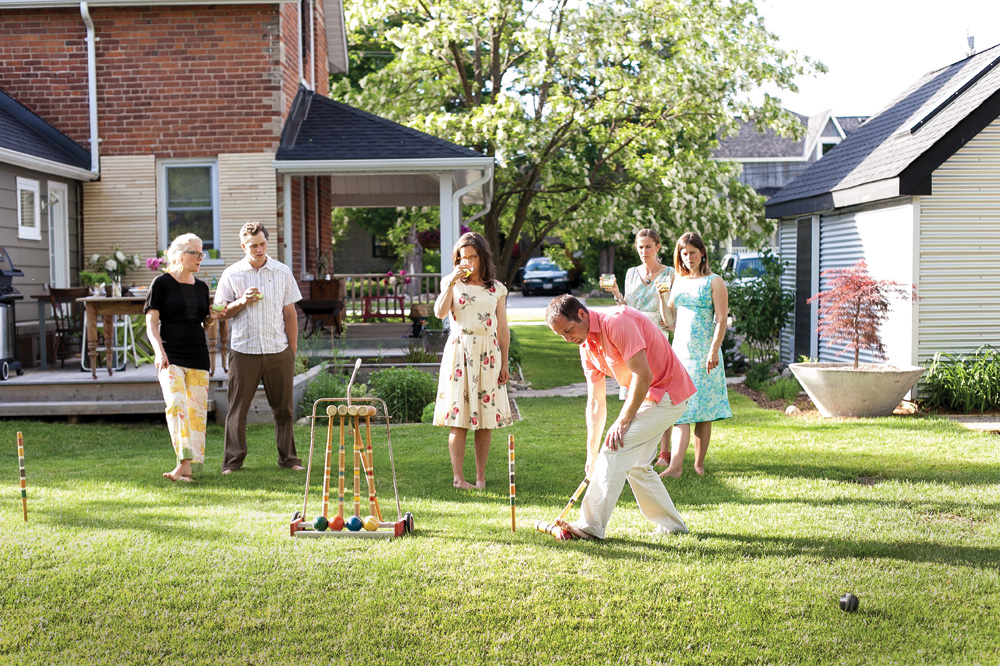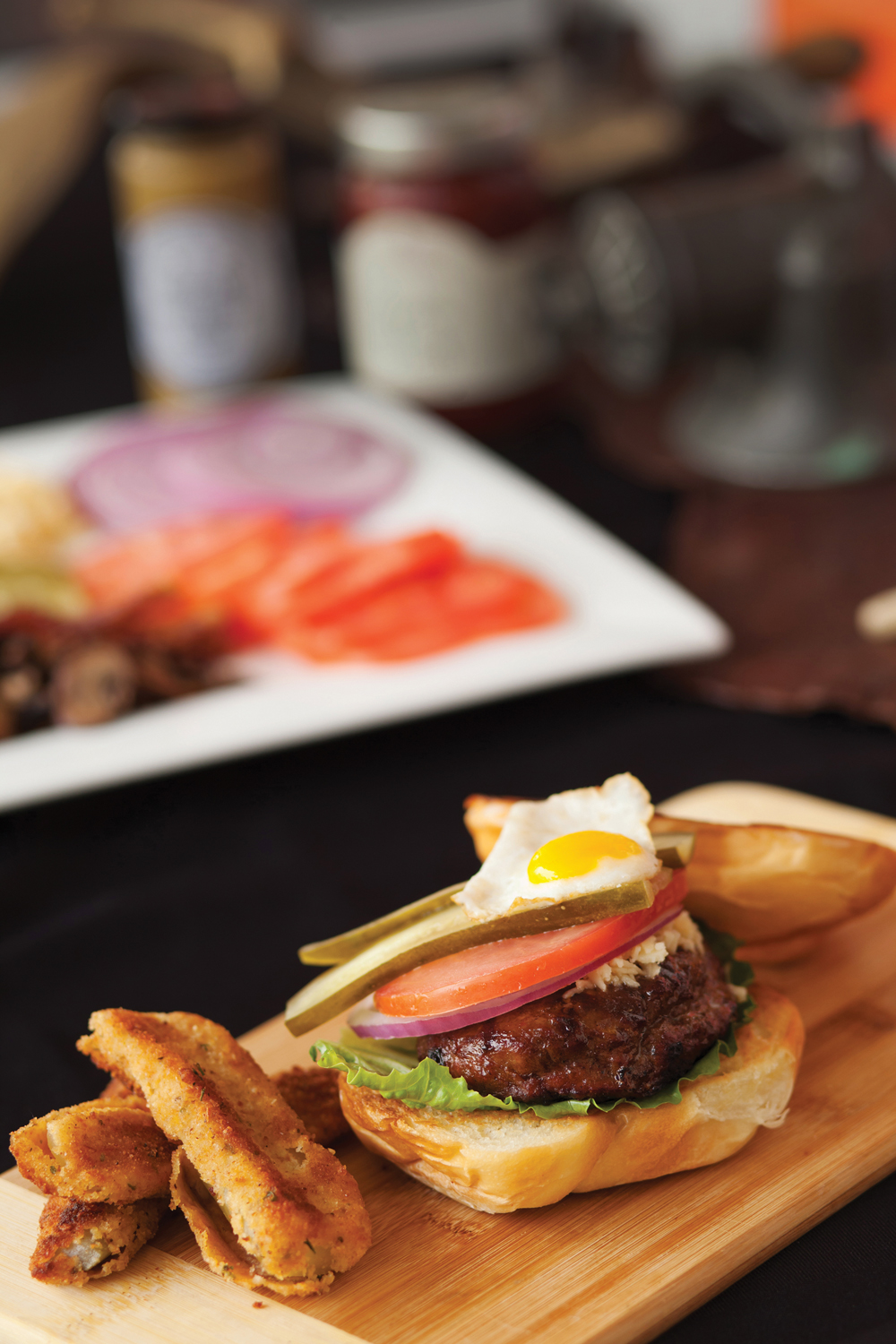The secret to recreating an authentic Argentine asado.
by Natalie Goldenberg-Fife // photography by Anya Shor
Are you captivated by staring into an open fire? Does the smell of barbecue and outside cooking joyfully ignite all your senses?
What if we showed you how to create one the world’s most memorable and ceremonial eating, drinking and gathering experiences by using the first and most fundamental form of cookery—fire.
We are talking about the Argentine asado, the style of cooking made famous by Argentina’s chef Francis Mallman, whose expertise cooking with fire is spotlighted in Season 1 of Netflix’s Chef’s Table—a must watch. According to Mallman, open-fire cooking can be a highly visual, sensuous, art-directed experience and very much akin to making love.
If you’ve made Collingwood your home-away-from-home because of its nature and space, and the slower pace of life, chances are that learning how to create one of the world’s greatest open-fire cooking experiences in your own backyard is right up your alley.
To guide us through the journey of open-fire cooking the Argentine way, we invited the stunning wife-and-husband duo Alejandra De Miguel and Coco Gaona to Collingwood in late August. Through their mobile business, Cultura Tiempo, the couple has been bringing fire to special parties and events in and around Ontario. They also offer the experience on their property in King City.
Gaona hails from San Antonio de Areco, a town in central Argentina famous for its peaceful atmosphere and wide-open farmlands where one can lead a true gaucho lifestyle—he’s a real South American cowboy.
“I grew up in a big family with seven siblings on a big farm,” says Gaona. We lived around the kitchen and fires every day. I was often around my father, vegetables, the garden, and my mother was always cooking with whatever she had in that moment. At 10 years old, I was becoming interested in cooking, the Argentine cuisine, everything.”
Prior to starting Cultura Tiempo, Gaona played polo. But having two young sons made him reconsider the dangers of riding a horse for a living. A couple of successful pop-up projects in Ontario and Areco six years ago made him realize he could quit polo and follow the passion sparked in his childhood.
“The idea was to do something like how it was when we were kids. Simple cooking and the fire,” Gaona says.
According to the Cultura Tiempo folks, Collingwood shares similar features to prime asado cooking landscape and vibes.
“It’s open farmland here with no restrictions, just like in Areco,” says De Miguel. “Coco was in his element when we cooked here. Part of the authentic Argentine asado experience is to embrace spontaneity, and Collingwood brings those laid-back vibes to the table.”
Hiring Cultural Tiempo to light the fires and cook the meat in your own backyard is the best asado education. But for those who want to recreate the experience, we plied them for some further insight into the nuances of asado.
On The Bay: How do you define the Argentine Asado?
Alejandra De Miguel: Asado is essentially barbecue, but so much more, because it is cooked on fire and not gas. To Argentines an asado is first and foremost a social gathering and often held to celebrate rites of passage, holidays and other special occasions.
It’s also a weekend ritual in Argentina and especially so in Coco’s hometown of Areco. Meat is typically the main character. Simple salads, grilled vegetables, salami and cheese, with bread that often serves as the plate. Handmade condiments like chimichurri (a mix of herbs and oil) and salsa criolla (a simple salsa with peppers and onion) are drizzled over the slow-cooked meats. A coarse finishing salt like Maldon is key.
And there’s certainly no asado without a glass (or five!) of wine.
OTB: Is there an ingredient that takes precedence over all others?
ADM: Years ago, I was writing about Argentine cuisine and called Coco to ask him this question, thinking I might hear “chimichurri.” Instead, Coco paused and said, “Time.”
Cooking on fire requires more time. Time to gather wood. Time to light the fire in a ritualistic fashion. Time to let the fire burn the wood to coal/embers and time to cook all the meats. Whole pieces of meat cuts are cooked, as opposed to individual steaks, because asado is generally for larger-scale gatherings. Asado is a long engagement which involves hanging out before the food is ready and way after you are done eating.
The asado experience dictates a way of life and I never remember going to an asado in a rush. There is no sense of rushing. You could be hanging out for two hours before you even think about eating.
OTB: Can you describe the ritual of lighting the fire.
ADM: It’s a ritual because of the intention behind it. You begin by gathering small branches, dry leaves and firewood from around the place you are cooking. It’s an immediate connection to your surroundings, to the outdoors.
But it’s not just about gathering wood to light fire. You are feeling out the wind, seeking a shady place if it’s summer or, if it’s a cold winter’s day, you’ll find the sunniest spot.
Once all the wood is collected, you ignite the fire and at that first point of contact you become fully immersed. You are present. There is no turning the knob and walking away or lighting a match and becoming distracted by your phone. You are there, present and connected from the first flame.
Coco Gaona: Fire is a beautiful way to cook. What you can do with a little bit of fire is magical. There is no propane in the middle of nowhere and you can cook for one person or 200 people. The connection with food and fire is amazing. Whatever you throw in the fire, like simple potatoes with olive oil and salt, ends up tasting amazing—try to do that with propane. Fire is the best kitchen in the world. The taste is never the same.
Sample Schedule for a Sunday asado (asado de Domingo)
- 9 a.m. Asado starts the moment you pick up, gather and cut the firewood.
- 10 a.m. The fire is lit; mate* is passed around
and sipped. - 11 a.m. If a whole lamb or pig is being cooked, this is the time to put it al asador (“on the cross”). Guests also begin to arrive, usually bringing a bottle of wine, dessert or salad. A vermouth or aperitivo will be served. And either salami and cheese (simple charcuterie) or empanadas.
- 11:30 a.m. The rest of the meat goes on the fire and guests start gathering around the fire.
- 1 p.m. Sit down for lunch—salads and bread on the table. A typical menu would include: mollejas (sweet breads), chorizo, morcilla (blood sausage), matambre de vaca (a thin Argentinian cut of beef), matambre de cerdo (pork), costillas (beef ribs), vacio (an Argentinian cut of beef similar to flank steak).
- 3 p.m. Sobremesa: hanging out at the table talking, finishing wine, dessert.
- 4 p.m. Pool time or a siesta (indoors or under a tree).
- 5 p.m. Hora del mate. A mate circle can go until 6 or 7 p.m., usually with something home-baked, or croissants.
- 7 p.m. Start thinking of aperitivo again!
*On the Importance of Mate
It’s not an asado without mate (pronounced MAH-teh), the caffeine-infused tea that is essential to the day-to-day life of Argentines. Often when showing up to an asado invitation early, Argentines arrive with mate in hand—or they are getting the mate ready and drinking it around the fire before starting the apervito.
All are welcome and share the same gourd and straw with one main person, el cebador, who tops up the water in the gourd to keep the round going and the mate tasting great.
Both asado and mate are core traditions in the gaucho lifestyle. Traditionally, those who worked at a ranch would gather around the morning fire having mate before starting their workday, just like they would gather around a fire to cook and share an asado. It is said that the good health of the gaucho was a mystery for many years, since their diet was believed to be made up of only meat, until the importance of mate was considered, with its high concentrations of many vitamins and minerals.






